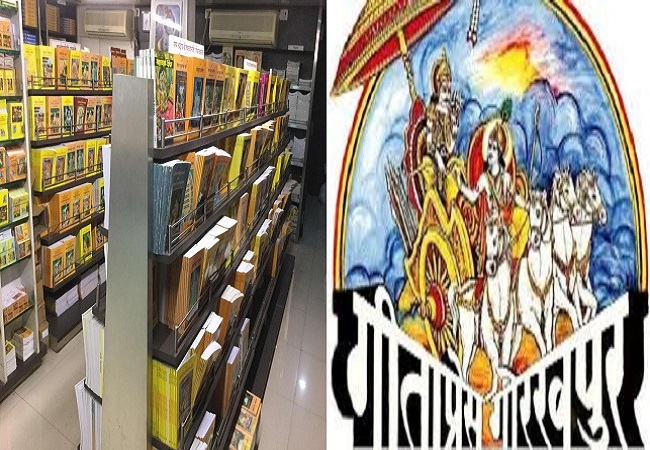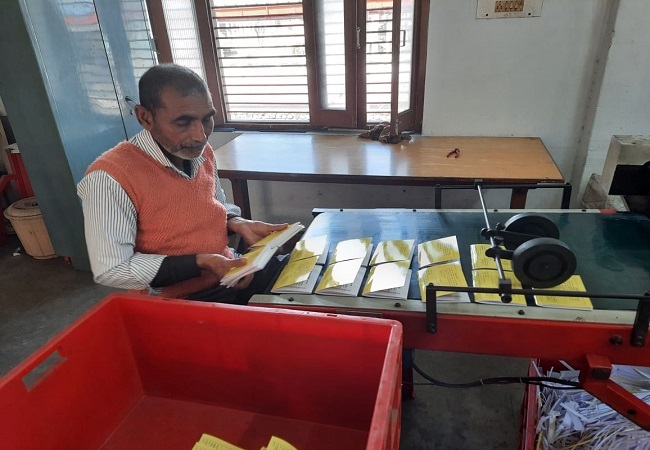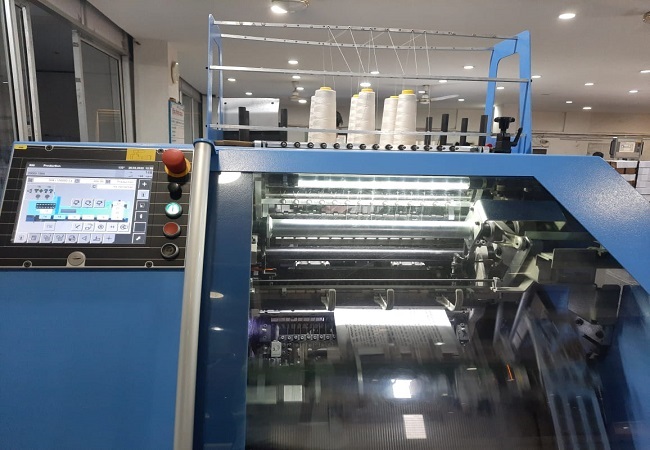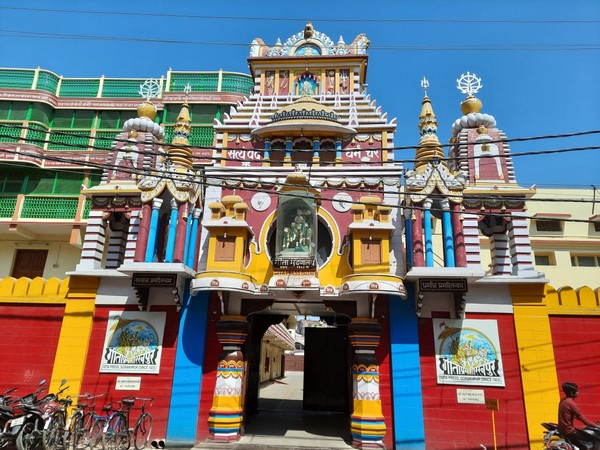
New Delhi: Since its inception during the freedom struggle in 1923, Gita Press in Gorakhpur, the largest publisher of Hindu religious literature, which has upgraded itself with German and Japanese machines currently publishes over 50,000 copies of more than 1,800 books in 16 languages every day.
The most ubiquitous books found in Hindu households are the Shrimad Bhagwad Gita and Ramcharitmanas, often side by side with the booklet of Hanuman Chalisa. A majority of these originate at the Gita Press.
“In 1923, there was a period of subjugation and most of the spiritual books had disappeared from the country. At that time a copy of the Gita could not be found even if people tried… Then, Jaya Dayal Goyandka set up the Gita Press in Gorakhpur. We started in a simple way and today we are adopting upgraded and sophisticated technologies,” Devi Dayal Agrawal, a trustee of the Gita Press, told ANI.
Afterward, Agarwal said the Press started to also print the Ramayana, the Mahabharata, the Puranas among other Hindu religious books.

“We are currently publishing over 1,800 books in 15 languages. Currently, we are printing nearly 50,000 to 55,000 books every day but the demand is much more. We are trying our best to fulfill the demands of people,” said Agarwal.
He also said that the focus of the firm is to provide pure religious books to people at a minimum price.
“Since its inception, the focus of Gita Press has been to make available low price books to people, and not make a profit. People are surprised to see how Gita Press is able to provide books at such low rates,” said Agarwal.
According to the trustee, the press was able to maintain its low prices because it does not buy raw materials directly from industries. “The main reason behind it is that we don’t add infrastructure cost. Secondly, we purchase raw materials directly from industries. And the last point is that our purpose is not to make a profit,” he said.

He also clarified that Gita Press “does not receive any kind of donation and it uses only its own resources.”
Due to the nominal prices of its books and their impeccable content with easy-to-grasp language, nicely laid-out text, and top-quality printing, Gita Press has been able to reach almost every home across India through its books and was able to sell over 71.77 crore copies, including Shrimad Bhagwat Gita (1,558 lakh); Sri Ramcharitmanas (1,139 lakh); Puran, Upanishad and Aadi Granth (261 lakh); books beneficial for women and children (261 lakh); Bhakti Charitra and Bhajan Mala (1,740 lakh); and other publications (1,373 lakh).
The printing press presently publishes 1,830 books, among which 765 are printed in Sanskrit and Hindi language, and the remaining are published in Malayalam, Telugu, Gujarati, Tamil, Marathi, Odiya, Kannada, Urdu, Assamese, Bangla, Punjabi, English as well as Urdu.
Gita Press also publishes Ram Charitmanas, an epic poem in the Awadhi language composed by the 16th-century Indian bhakti poet Tulsidas, in the Nepali language in its printing press which was founded by Jaya Dayal Goyandka on April 29, 1923, to propagate and protect Sanatana Dharma.
It was a time when religious conversions were peaking and India was in the grip of the British regime in 1923 when Goyandka, Ghanshyam Das Jalan, and Hanuman Prasad Poddar joined hands to establish Gita Press for spiritual reawakening and moral righteousness.

During its first four years, Gita Press printed only ancient scriptures. The canvas and spectrum widened in 1927 when Poddar started the magazine Kalyan. This gave a new face to Gita Press.
Next year, Gita Press will turn 100 but the company, which employed over 400 workers, continues to plod on unassumingly, without making noise about its huge body of work and incredible achievements.
Besides, its other books, Kalyan, the most popular Hindi periodical of the Gita Press, has a subscriber base of over 2,45,000, and its English version, Kalyana-Kalpataru, has over 100,000 subscribers.
Visiting the press campus, one marvels at the architectural brilliance of its famed entrance gateway, which depicts the country’s popular temple styles.
The entrance pillars are designed after the pillars of the Ellora Cave Temple. The circular hollow in the middle portion, behind the chariot of Sri Krishna and Arjuna, is carved like the mouth of the Ajanta cave temple. A replica of Meenakshi Temple’s architecture adorns the entry peak.

Designs and graphics overhead portray Badrinath, Dwarka, Puri, and Rameswaram, 2021– India’s four major pilgrimage destinations. Satyamvad dharamamchar (Speak truth and practice dharma) is engraved on the door.
Dr Rajendra Prasad, the first president of India and a great scholar, inaugurated this grand structure on April 29, 1955.
Gita Press functions on a sprawling 32 acre (13-hectare) lot. As with any press, has four main departments: pre-press, printing, binding and distribution.
Apart from manual works, Gita Press has been taking the help of German and Japanese machines for better, quicker, more efficient printing, binding sewing, and pasting which helps cut production expenses as well as completes to fulfill the demands of copies printed in the firm.




